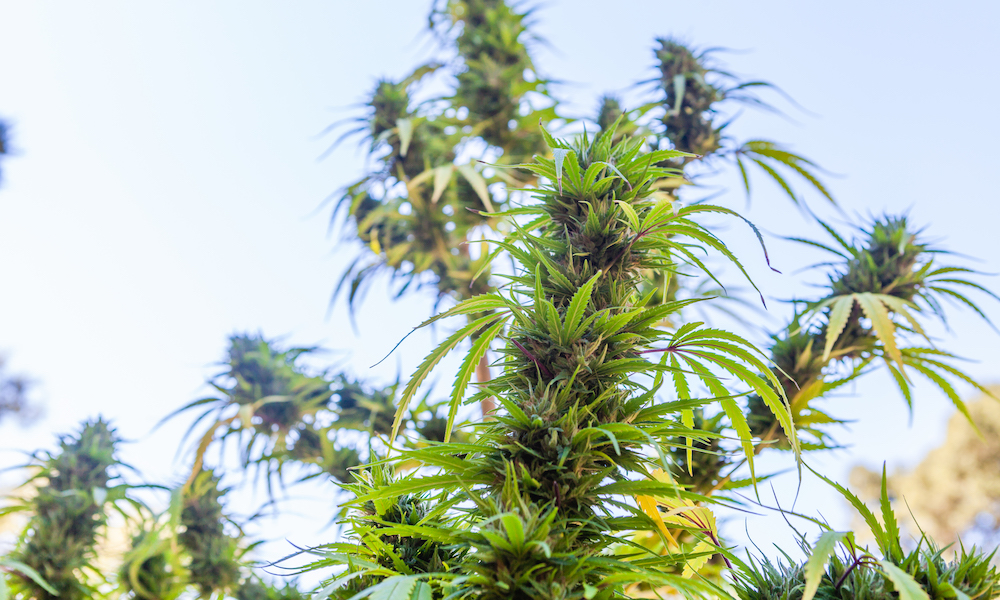
In History
Cannabis Plant Originated in Tibet, New Research Shows
The latest research is pointing to the Tibetan Plateau as the origin of cannabis, reaffirming academia’s long-held belief the plant first evolved in central Asia.
A new study has put forth a compelling argument about where the cannabis plant originated: in the Qinghai Lake region of the Tibetan Plateau, about 28 million years ago.
The scientists behind the research, known as biogeographers, used data on the way wild cannabis pollen has distributed over the years to ground their study. Then, using information from 155 fossil plant studies that have been conducted in Asia, they were able to get more precise. The pairing of the two led to civilization’s best localized guess yet of where marijuana evolved.
According to the study, published in the journal Vegetation History and Archaeobotany, the location is about 10,700 feet above sea level in the Qinghai Lake region of the Tibetan Plateau. The lake has a huge surface area of 1,700 square miles. The region is home to an array of Buddhist monasteries and rare birds like the black-necked crane. It is currently under the control of China. The lake is the largest lake on the largest, highest and youngest plateau in the world, as well as the largest lake in China, as noted by the People’s Republic’s submission to make the lake a UNESCO World Heritage site in 2017. Now that we believe the cannabis plant was born there, how can it not be?
Using “molecular clock analysis,” or a tool that looks at the mutation rate of biomolecules to estimate how long ago two species diverged, the researchers estimated that the cannabis plant diverged from the hops plant 27.8 million years ago.
The research was led by John M. McPartland of the University of Vermont and GW Pharmaceuticals, William Hegman from Middlebury College, and Tengwen Long from the University of Nottingham’s Ningbo China campus.
McPartland spoke exclusively with Cannabis Now about what inspired his research. “People have wondered about the origins of cannabis for over a millennium. Ibn Wahshiyya wrote the first hypothesis back in 930 AD!,” he said in an email, “Not too many crop plants provide us with three different products: fiber, food and medicine.”
While McPartland obviously points to identifying Qinghai Lake as the biggest takeaway of his study, he says researchers found out a lot of other cool stuff, too.
“By the time humans invented agriculture, [cannabis] had spread throughout Asia and Europe —even in India,” he said. “Botanists have long argued whether or not cannabis grew indigenously in India, before humans started spreading seeds around. Thus, wild cannabis was available for people across Eurasia to bring into cultivation. It was likely domesticated, independently, in several places.”
How Researchers Discovered the Origins of Cannabis
So, how did McPartland and his team do it? Many of those fossil plant studies they looked at assigned the same markers to pollen from cannabis and pollen from its cousin hops. This is because the two can be told apart, but their structure is similar enough that a lot of research just threw them under one label. To map pollen in space and time, the publications combed through fossil plant studies and separated cannabis pollen from hops pollen.
While the authors speculate that cannabis separated from hops 27.8 million years ago, the oldest pollen they discovered that fit all their parameters of the research and was consistent with cannabis dated back to 19.6 million years ago. The site where it was discovered is in Ningxia, China, on the border between the Tibetan Plateau and the Loess Plateau.
From Tibet, the researchers said the cannabis plant migrated to Europe by 6 million years ago, the Northwest part of China by 2.5 million years ago.
In the last 130,000 years, cannabis has popped up everywhere. It found its way into four of six Chinese regions, starting with Kazakhstan and then Turkey about 19,000 years later.
TELL US, did you know cannabis was such an ancient plant?

























